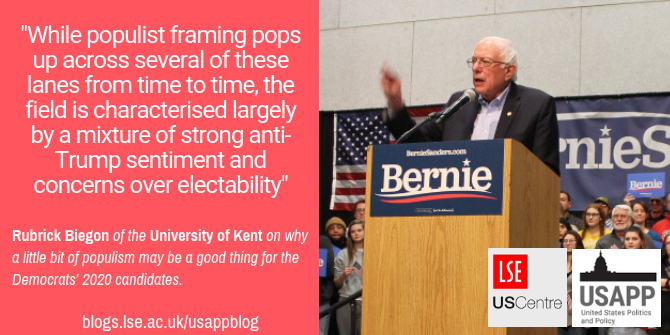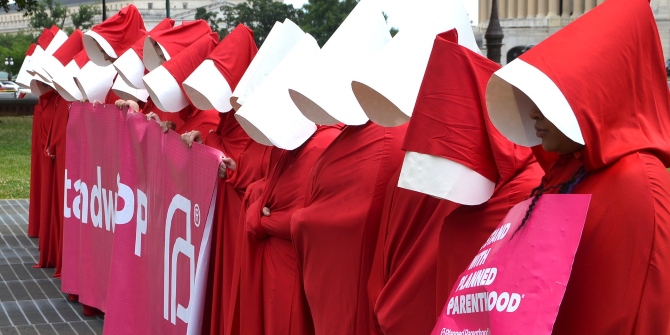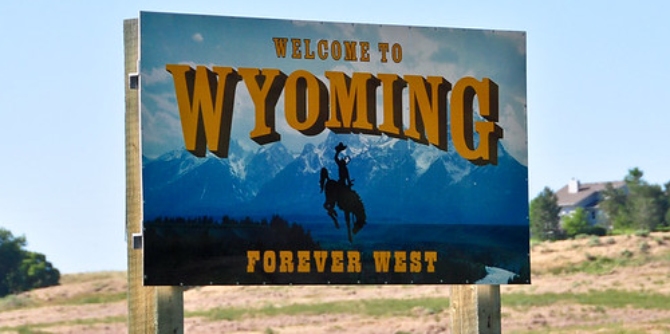 In the 2016 presidential race, Donald Trump’s populism helped to elevate him to the White House. Now, with the Democratic presidential primaries fast approaching, Rubrick Biegon looks at whether populism may pay a part in the left’s political strategies. He comments that Trump has firmly planted American populism on the right and that in their personal attacks on him, the many Democratic candidates in the 2020 race may be leaving little room to challenge the incumbent on his own populist turf.
In the 2016 presidential race, Donald Trump’s populism helped to elevate him to the White House. Now, with the Democratic presidential primaries fast approaching, Rubrick Biegon looks at whether populism may pay a part in the left’s political strategies. He comments that Trump has firmly planted American populism on the right and that in their personal attacks on him, the many Democratic candidates in the 2020 race may be leaving little room to challenge the incumbent on his own populist turf.
- This article is part of our Primary Primers series curated by Rob Ledger (Frankfurt Goethe University) and Peter Finn (Kingston University). Ahead of the 2020 election, this series explores key themes, ideas, concepts, procedures and events that shape, affect and define the US presidential primary process. If you are interested in contributing to the series contact Rob Ledger (ledger@em.uni-frankfurt.de) or Peter Finn (p.finn@kingston.ac.uk).
Populism has become the defining political concept of our time. In naming it the 2017 ‘word of the year’, the publishers of the Cambridge Dictionary noted that, ‘what sets populism apart… is that it represents a phenomenon that’s both truly local and truly global’. In the context of American politics, of course, the discussion centres on Donald Trump, who has come to embody not only the potency of populism but its dangers, limitations, and ambiguities.
In some respects, Trump’s populism is difficult to pin down. How was someone of Trump’s wealth and fame, with his policy positions, able to mobilize broad anti-elite sentiment in such an effective manner? With Trump now the incumbent, populism’s place in the 2020 election cycle would seem an even more uncertain force. This is particularly true within the crowded Democratic primaries. So, will populism play a part in the Democrats’ efforts to unseat Trump?
Trump’s Peculiar Populism
The term ‘populism’ is notoriously vague. It has its origins in the United States, where a multi-class movement of farmers and workers emerged in the 1890s to push for political and economic reforms and challenge the influence of big business on American government. The movement coalesced into the short-lived People’s Party (also known as the Populist Party), which helped fuel subsequent progressive movements on a host of issues, from banking regulation to the eight-hour workday. More recently, the concept has come to denote a variety of (sometimes contradictory) meanings, evoking charismatic leadership and demagogy as well as clientelism and even ‘mob rule’.
As I discuss in my recent work, the concept of populism does provide a useful conceptual framework for understanding the Trump phenomenon, but with some important caveats. Populism is not an ideology, and the term does not capture the essence of Trump’s political project, which is better understood as nationalist, illiberal, and/or reactionary. Rather, it is about the framing of Trump’s politics as oppositional, anti-elitist, and anti-establishment. This move is facilitated by his appeal to the ‘Jacksonian’ elements of US national identity (in reference to the legacy of Andrew Jackson, the seventh president). In Trump’s rhetoric, the construct of ‘the people’ is understood through the lens of a racialized ‘folk community’ beset by myriad ‘others’, whether immigrants, Muslims, or ‘globalist’ elites.

“IMG_5530” by Matt A.J. is licensed under CC BY 2.0
To be sure, Trump’s populism plays off of real anxieties in the US heartland. Much ink has been spilled over the fabled rust-belt swing voter drawn to Trump’s ‘America First’ protectionism. In the field of International Relations, the socio-economic factors that provide the material base for Trump’s own brand of conservatism are related to debates over American ‘decline’. The growing economic precariousness and stagnating wages of recent decades can only be fully appreciated alongside developments in the international political economy. Trump was able to ‘weaponize’ people’s apprehension over globalization to infuse his mostly-cultural appeal to a cross-section of the US electorate.
Which Way for American Populism?
The ambiguity of populism means it can be applied to various actors, ideologies, and policy positions. There is little doubt that American populism is now firmly planted on the right, a development many decades in the making. Yet the well-documented growth in wealth and income inequality in recent generations would seem to provide fertile ground for a progressive variant. This opportunity is best represented by the presidential campaigns of Senator Bernie Sanders (Vermont), whose rise to national prominence was widely interpreted as evidence of the re-emergence of a populist left. To date, Sanders’ 2020 campaign has been remarkably similar to his 2016 bid. His anti-elite, social democratic emphasis on economic justice has yet to provide him with clear front-runner status in the polls, however, raising questions about the efficacy of class-based populism in the context of the larger Democratic coalition.
The front-runner designation belongs to former Vice President Joe Biden, who would seem to offer a softer, more muted form of populism, based almost entirely on his rust-belt biography and ‘blue collar’ image. This can be contrasted with the campaign of Senator Elizabeth Warren (Massachusetts), who has offered relatively detailed policy positions to ‘end corruption’ and ‘rebuild the middle class’, but who suffers from characterizations of ‘aloofness’ and comparisons to Hillary Clinton, the consummate insider. (The gendered aspects of populist electoral strategies remain an understudied feature of the phenomenon.) Meanwhile, Senator Kamala Harris (California) has based her campaign around the quintessentially populist slogan ‘for the people’, while her colleague Amy Klobuchar (Minnesota) has played up her Midwestern roots and moderate voting record. Other candidates, such as former Congressman Beto O’Rourke (Texas), Senator Cory Booker (New Jersey), and Mayor Pete Buttigieg (South Bend, Indiana), generally eschew populism altogether, in favour of more cosmopolitan and ‘unifying’ themes.
To try and catalogue the multitude of Democratic candidates running for president, commentators have devised various ‘lanes’. While populist framing pops up across several of these lanes from time to time, the field is characterised largely by a mixture of strong anti-Trump sentiment and concerns over electability. One potential pitfall is that Democrats trap themselves in an anti-Trump posture that focuses too much on the man himself and leaves little room for wider appeals, and which fails to challenge Trump on his supposedly ‘anti-elite’ or ‘anti-establishment’ home turf. Such a strategy may squander the oppositional energy needed to limit him to one term.
- This article is based on the paper, ‘A populist grand strategy? Trump and the framing of American decline’, in International Relations.
Please read our comments policy before commenting.
Note: This article gives the views of the author, and not the position of USAPP – American Politics and Policy, nor the London School of Economics.
Shortened URL for this post: http://bit.ly/2JbEfK3
About the author
 Rubrick Biegon – University of Kent
Rubrick Biegon – University of Kent
Rubrick Biegon is a Lecturer in International Relations at the University of Kent. His research interests include US foreign policy, international security, and international political economy. He is the author of US Power in Latin America: Renewing Hegemony (2017).






